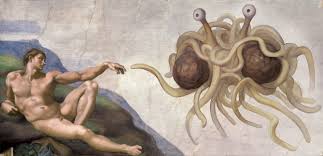 Let’s try to understand what religious beliefs are. What makes a religious belief work, take hold, and are found across cultures and generations? In these posts I’m continuing to focus on Religion Explained: The Evolutionary Origins of Religious Thought by Pascal Boyer whose explanation is grounded in cognitive theory. That is, this is a cognitive explanation for religion.
Let’s try to understand what religious beliefs are. What makes a religious belief work, take hold, and are found across cultures and generations? In these posts I’m continuing to focus on Religion Explained: The Evolutionary Origins of Religious Thought by Pascal Boyer whose explanation is grounded in cognitive theory. That is, this is a cognitive explanation for religion.
Religious beliefs — gods, ghosts, virgin births, etc — are not randomly fabricated nonsense. (I included ghosts as an example of religious beliefs because I’m discussing religion in its most generic sense and not confining myself to mainstream Western religions.) Religious concepts actually follow certain rules or recipes. They have specific types of properties. The Flying Spaghetti Monster, on the contrary, is a concoction made to look like “randomly fabricated nonsense”; the ingredients that go into the making of real religious concepts could scarcely produce a Flying Spaghetti Monster.
I cannot possibly explain in depth how this recipe works in a blog post. To get the details one ought to read the first two chapters of Boyer’s book. I will try to hit key highlights. (And of course the terms used in describing cognitive processes are necessarily metaphorical.)
There are two essential ingredients that go into making a viable religious concept, and they need to be mixed in the right proportions. Boyer discusses the experimental research behind it all but I won’t address any of that here.
Take the overall understanding of what we all have by the idea of “animal”. We have all constructed since infancy an common set of ideas of what being an “animal” means, such as:
- animals grow and die
- animals have typical shapes or body plans
- animals need food to survive
- animals reproduce “after their own kind” or species
In fact we have “minitheories” about what it means to be an animal. As soon as we understand something is an animal we immediately infer many things about it that we do not need to check or test each time: e.g. it consists of the same sorts of innards, digestive tract, nervous system, as any other animal; that it will have a symmetrical shape; that it eats to survive — either plants or other animals; that if it kills and eats other animals it does so because it gets hungry, and so forth.
If you never heard of an Invisible Rail but were told it was an animal creature of some sort, then you would instantly know all of the above about it before even knowing what sort of animal it was or what it looked like.
An animal category in our heads enables us to make sense of “natural concepts” and to make all sorts of inferences about their behaviour without ever being told such details again each time we learn about a new animal.
In other words, we have a whole range of expectations that come into play whenever we are told about a new animal. If you heard that an Invisible Rail laid eggs from which baby Invisible Rails hatched you would not be surprised. If in addition you learned that it had wings, you would know it is a bird, and you would assume it has a beak and feathers. All of this would be consistent with the sorts of details you would have expected to hear about a something belonging to the animal category of knowledge.
But if you hear that an Invisible Rail had the ability to suddenly materialize anywhere and anytime when a child was deeply distressed, that would be unexpected information. That ability would violate all that you know about the properties of physical bodies. It would not be something your understanding of animals allowed to happen.
In fact, you would almost certainly recall that unexpected detail about the Invisible Rail because it is so unusual, so unexpected. You would imagine the Invisible Rail is a very unusual sort of animal.
But at the same time everything else about the Invisible Rail — laying eggs, feathers, wings, beak — would be exactly as you expect.
A religious concept consists of these two things:
- it violates certain expectations from what we call “ontological categories”
- it preserves other expectations.
There are a few more rules surrounding these two details, but first let’s understand “ontological categories”. Continue reading “Religion Explained: How to Make a Good Religious Concept”
